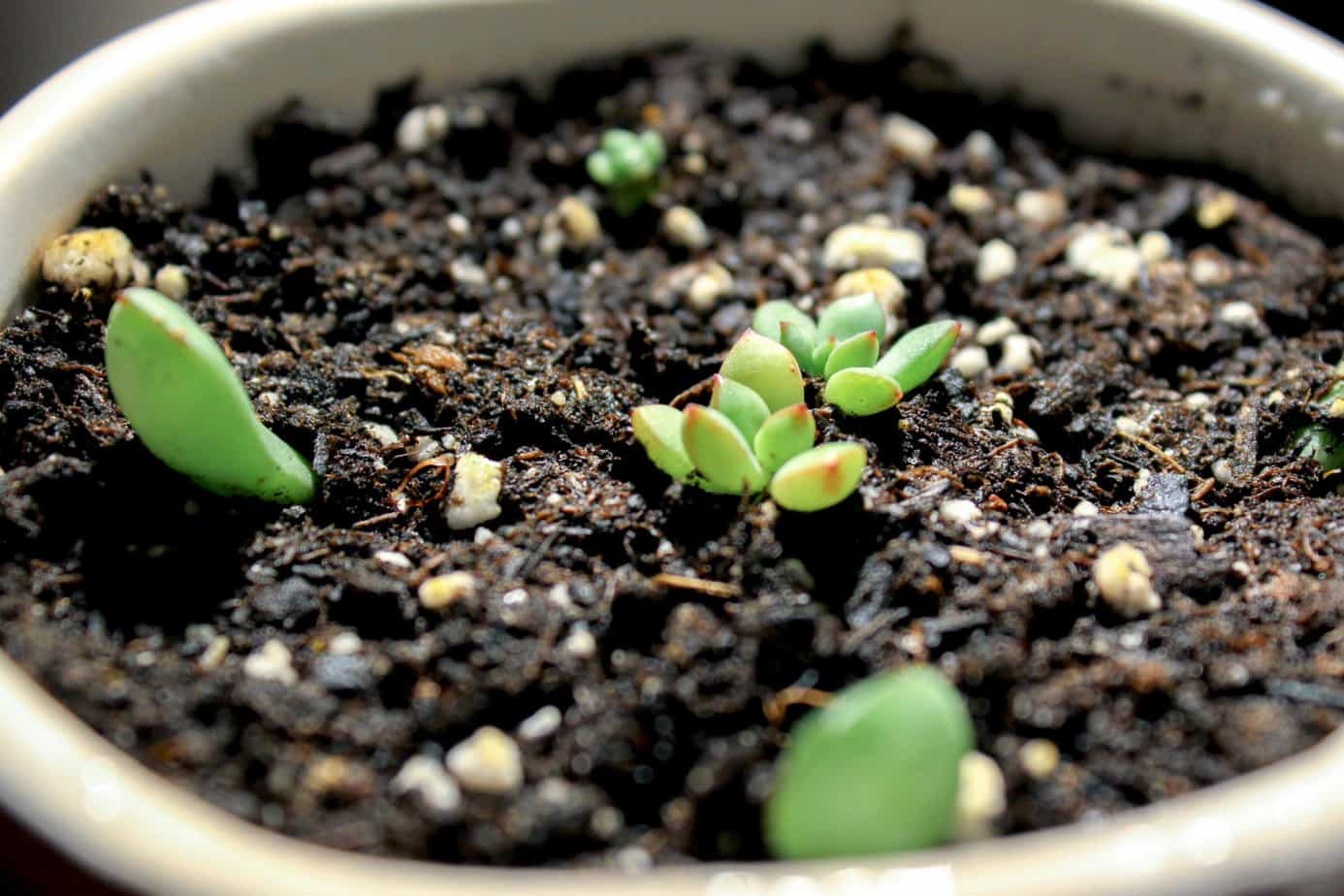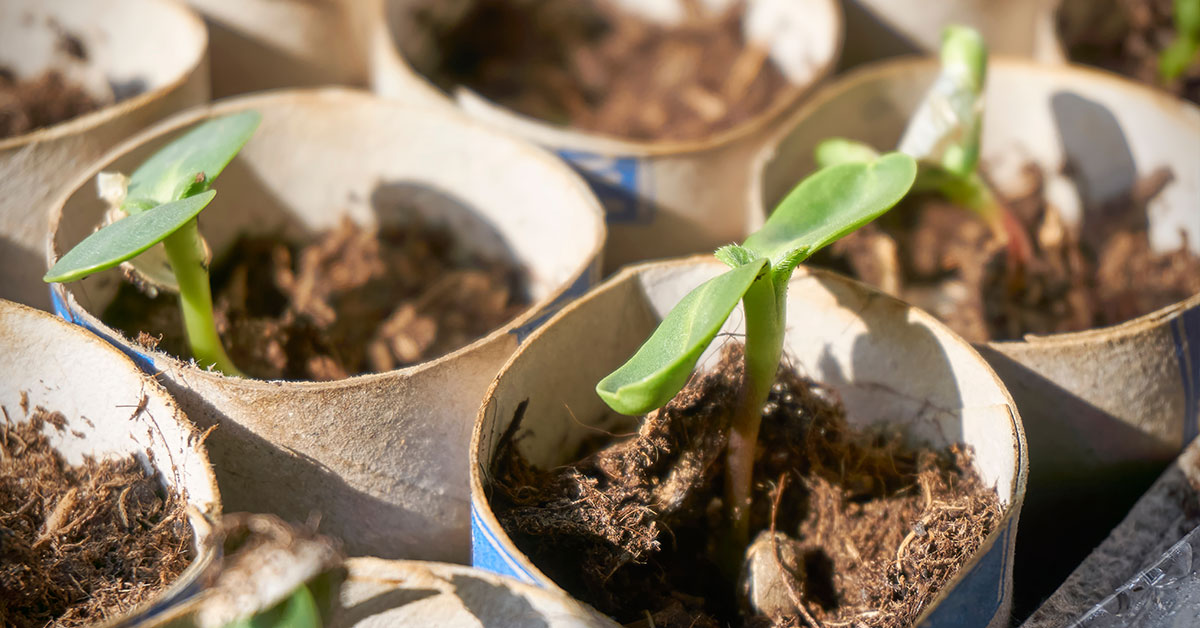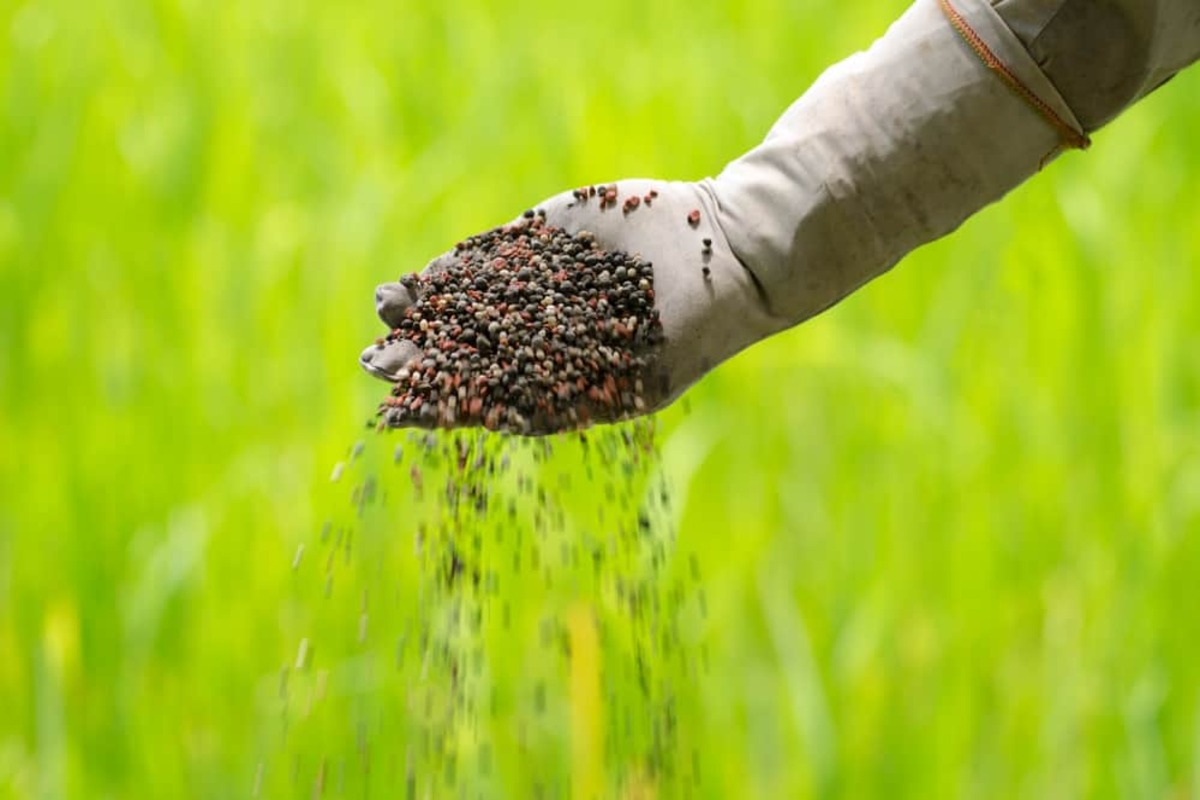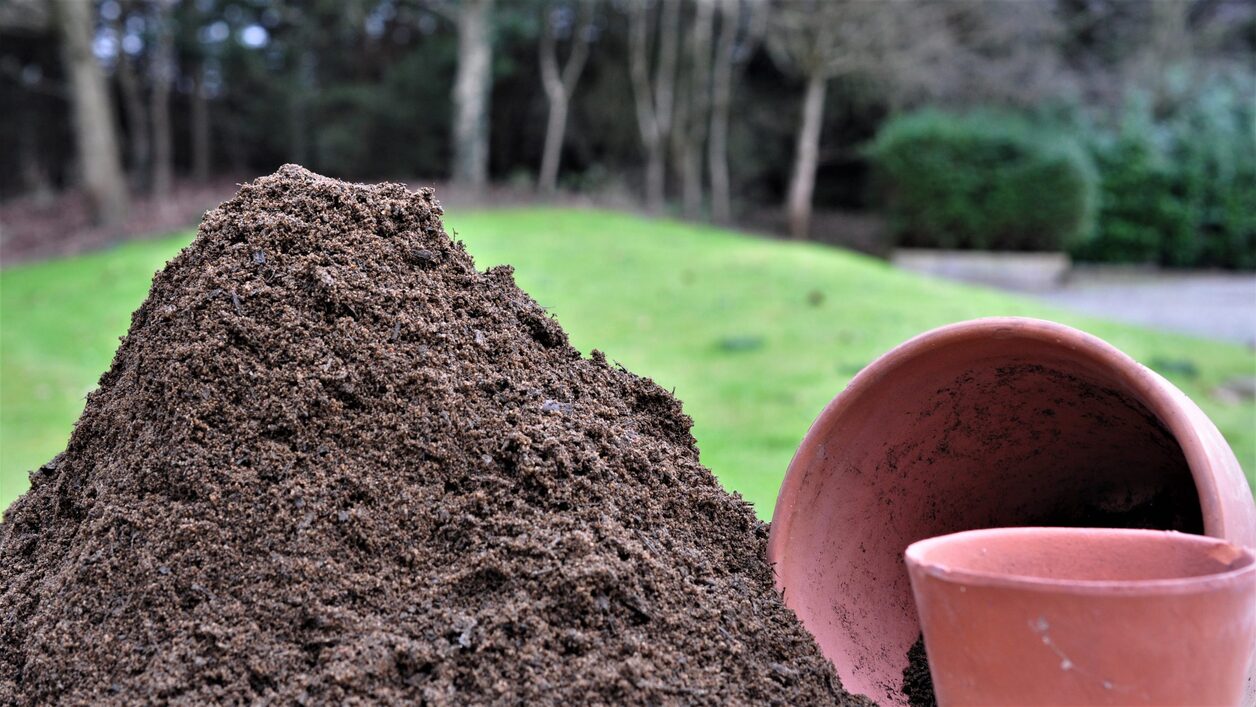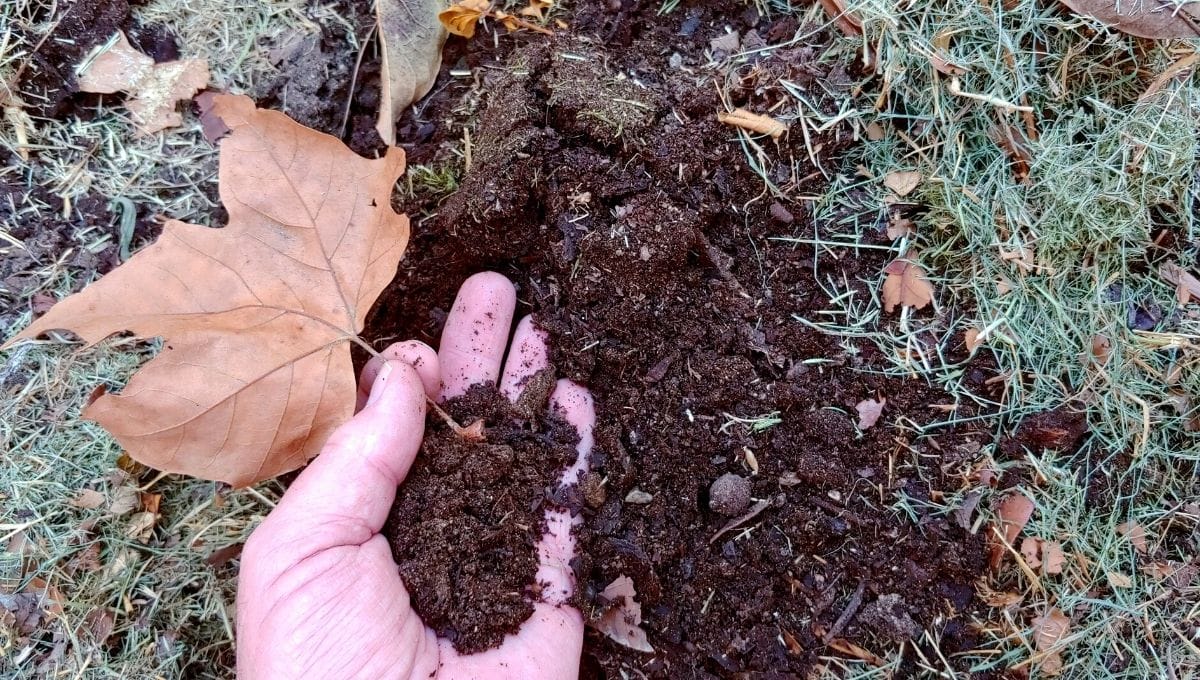Home>Gardening Basics>Understanding Soil>How Long Does It Take For Topsoil To Form


Understanding Soil
How Long Does It Take For Topsoil To Form
Modified: February 8, 2024
Understanding soil: Learn how topsoil forms and discover how long it takes for this crucial layer of soil to develop.
(Many of the links in this article redirect to a specific reviewed product. Your purchase of these products through affiliate links helps to generate commission for Chicagolandgardening.com, at no extra cost. Learn more)
Table of Contents
Introduction
Welcome to the fascinating world of soil! While often overlooked, soil is the foundation of life on Earth. It is the medium in which plants grow, the provider of essential nutrients, and a vital component of our ecosystem. One crucial aspect of soil is the topsoil layer, which plays a significant role in sustaining plant life and supporting agriculture. In this article, we will explore the process of topsoil formation, the factors that influence it, and the timeframe it takes to develop.
Topsoil, also known as the “A horizon,” is the uppermost layer of soil, typically rich in organic matter and nutrients. It is formed through a complex interplay of geological, biological, and environmental processes over an extended period. Understanding the journey of topsoil formation is essential as it helps us appreciate the delicate balance required to sustain healthy ecosystems and productive agricultural practices.
As we delve into the topic, we will uncover the various factors that impact topsoil formation. From weathering and erosion processes to the critical role of organic matter and microorganisms, we will explore how these elements contribute to the development of fertile topsoil. Additionally, we will examine the environmental factors that influence topsoil formation, including climate, vegetation, and topography.
By understanding the timeline for topsoil formation and the factors that shape it, we can appreciate the complexity and fragility of this natural resource. This knowledge is vital for sustainable land management, soil conservation, and supporting agricultural practices that promote long-term soil health. So, let’s dive into the intriguing world of topsoil formation and unravel the mysteries beneath our feet.
Factors Affecting Topsoil Formation
Topsoil formation is influenced by several factors that contribute to the development of a nutrient-rich and fertile layer of soil. These factors include weathering and erosion processes, the presence of organic matter, and the role of microorganisms. Let’s explore each of these factors in more detail:
- Weathering and Erosion: Weathering refers to the breakdown of rocks and minerals through physical, chemical, and biological processes. Over time, this weathered material accumulates to form soil. Erosion, on the other hand, involves the movement of soil particles by wind, water, or ice. Both weathering and erosion play a crucial role in the transformation of parent material into topsoil.
- Organic Matter: Organic matter is an essential component of topsoil formation. It refers to the decayed remains of plants, animals, and microorganisms. The presence of organic matter improves soil structure, enhances water retention, and provides a source of nutrients for plant growth. The decomposition of organic matter by soil organisms releases valuable nutrients that enrich the soil and contribute to topsoil formation.
- Microorganisms: Soil is teeming with diverse microorganisms such as bacteria, fungi, and archaea. These microscopic organisms play a pivotal role in the decomposition of organic matter, nutrient cycling, and soil aggregation. They break down complex organic compounds into simpler forms that can be readily absorbed by plants. Moreover, the activities of microorganisms help to create pore spaces in the soil, improving its aeration and water-holding capacity.
These factors work together to shape the development of topsoil. As weathering processes break down rocks, they release mineral particles that, over time, mix with organic matter and soil organisms to form a fertile layer. The presence of vegetation also influences topsoil formation, as the roots of plants contribute to soil aggregation and nutrient cycling.
Understanding these factors is crucial for soil conservation and sustainable land management practices. Human activities such as deforestation, excessive tillage, and the use of synthetic fertilizers can disrupt the delicate balance of topsoil formation and result in soil degradation. By implementing practices that promote soil organic matter, minimize erosion, and foster a healthy soil microbiome, we can safeguard our topsoil and ensure its long-term fertility.
Weathering and Erosion Processes
Weathering and erosion are fundamental processes that shape the formation of topsoil. Weathering refers to the physical, chemical, and biological processes that break down rocks and minerals into smaller particles. Erosion, on the other hand, involves the movement of these particles by wind, water, or ice. Together, these processes create the foundation for topsoil formation.
Physical weathering occurs through mechanical forces such as freezing and thawing, temperature changes, and the actions of wind and water. These forces cause rocks to crack and break apart, increasing their surface area and exposing them to further weathering. Chemical weathering involves the breakdown of rocks through chemical reactions. Water, carbon dioxide, and acids (both natural and human-induced) can dissolve minerals and alter their composition.
Biological weathering is driven by the activities of living organisms like plants, animals, and microorganisms. Plant roots, for example, can exert pressure on rocks, causing them to fracture. Microorganisms can release enzymes that break down minerals, facilitating their conversion into soil particles. The combined effects of physical, chemical, and biological weathering gradually transform parent materials into smaller particles, forming the basis of topsoil.
Once weathering breaks down rocks and minerals, erosion comes into play. Erosion occurs when wind, water, or ice transport the weathered particles away from their original location. Moving water, especially during heavy rainfall, can carry away soil particles, resulting in the loss of fertile topsoil. Wind erosion is particularly prevalent in dry and arid regions, where wind can pick up and transport loose soil particles over long distances. Glacial erosion refers to the movement of soil and rock particles by glaciers, shaping landscapes and contributing to topsoil formation.
It is important to note that while erosion plays a role in the transport of soil particles, it can also be detrimental to topsoil health if it is excessive or unchecked. Erosion can lead to soil loss, diminished soil fertility, and increased sedimentation in water bodies. To mitigate erosion, soil conservation practices such as contour plowing, terracing, and the use of cover crops are employed to prevent soil erosion and safeguard the topsoil layer.
Weathering and erosion processes are ongoing and dynamic, constantly shaping the Earth’s surface and contributing to topsoil formation. Understanding these processes helps us appreciate the delicate balance required to maintain healthy topsoil, prevent erosion, and sustain productive agricultural practices.
Importance of Organic Matter
Organic matter is a crucial component of topsoil formation and plays a significant role in soil health and fertility. It refers to the decomposed remains of plants, animals, and microorganisms that contribute to the dark and nutrient-rich layer of soil known as the topsoil. Understanding the importance of organic matter helps us appreciate its role in sustaining plant growth and supporting a healthy ecosystem.
One of the primary benefits of organic matter is its ability to improve soil structure. As organic matter decomposes, it releases sticky substances called humic acids that bind soil particles together, creating aggregates. These aggregates give the soil a crumbly texture, allowing for better water infiltration and air circulation. The improved soil structure also creates pore spaces, which are essential for root growth and the movement of water and nutrients.
Furthermore, organic matter enhances the soil’s water-holding capacity. It acts like a sponge, absorbing and retaining moisture, making it available to plants during dry periods. This can help mitigate the impact of drought and reduce the need for frequent irrigation. Additionally, organic matter helps prevent soil compaction, a condition that restricts root growth and limits water and nutrient uptake.
In terms of nutrient availability, organic matter is a valuable source of essential elements for plant growth. As organic matter decomposes, it releases nutrients such as nitrogen, phosphorus, and potassium, which are essential for plant growth and development. These nutrients are converted into forms that plants can easily take up and utilize. Organic matter also acts as a reservoir for micronutrients and helps buffer the soil pH, providing optimum conditions for plant growth.
Besides its impact on soil structure and nutrient availability, organic matter also contributes to the biological activity in the soil. Soil is home to a diverse range of microorganisms, including bacteria, fungi, and earthworms, that play a crucial role in nutrient cycling and the breakdown of organic matter. These microorganisms decompose organic matter further, releasing additional nutrients and contributing to the overall health and fertility of the soil.
Overall, organic matter is vital for maintaining healthy topsoil and supporting sustainable agriculture. It improves soil structure, enhances water-holding capacity, provides essential nutrients, and supports the diverse soil microbiome. By incorporating practices such as cover cropping, composting, and organic amendments, we can increase organic matter content in the soil, promote topsoil formation, and ensure long-term soil health and productivity.
Role of Microorganisms
Microorganisms, including bacteria, fungi, and archaea, play a crucial role in topsoil formation and soil health. These microscopic organisms contribute to the decomposition of organic matter, nutrient cycling, soil structure, and overall soil fertility. Understanding the role of microorganisms helps us appreciate their significance in maintaining a healthy and productive topsoil layer.
One of the key roles of microorganisms in the soil is the decomposition of organic matter. They break down complex organic compounds, such as dead plant material and animal waste, into simpler forms that can be easily absorbed by plants. Through this process, microorganisms release valuable nutrients, such as nitrogen, phosphorus, and carbon, back into the soil, enriching it and supporting plant growth.
Microorganisms also contribute to soil structure by creating aggregates and promoting soil stability. Fungal hyphae, for example, extend through the soil and bind particles together, enhancing soil aggregation. This improves soil porosity, allowing for better air and water movement within the soil, which is essential for root growth and nutrient uptake. The activities of microorganisms also help to create pore spaces in the soil, improving water infiltration and drainage.
Nutrient cycling is another crucial role of microorganisms. They break down organic matter, releasing nutrients that are then available for plant uptake. Microorganisms are involved in processes such as nitrogen fixation, where certain bacteria convert atmospheric nitrogen into a form that plants can utilize. They also mediate the transformation of nutrients, such as the release of phosphate from organic matter or the conversion of ammonium to nitrate. This cycling of nutrients ensures the availability of essential elements for plant growth.
In addition to nutrient cycling, microorganisms promote the overall health and resilience of the soil ecosystem. They form symbiotic relationships with plants, such as mycorrhizal associations, where fungi colonize plant roots and facilitate nutrient uptake. These beneficial interactions enhance plant health, increase resistance to pests and diseases, and contribute to improved crop yields.
Microorganisms are also involved in the breakdown of pollutants and the remediation of contaminated soils. Certain bacteria and fungi have the ability to degrade harmful substances, such as pesticides and industrial pollutants, through biochemical processes. This microbial activity helps to detoxify soils and restore their natural balance.
Overall, microorganisms are instrumental in topsoil formation and soil health. Their activities drive the decomposition of organic matter, nutrient cycling, soil structure, and the overall functioning of the soil ecosystem. By promoting practices that support the growth and diversity of beneficial microorganisms, such as minimizing chemical inputs and providing organic matter, we can ensure the long-term health and productivity of our topsoil.
Timeframe for Topsoil Formation
Topsoil formation is a gradual and time-consuming process that occurs over hundreds to thousands of years. The exact timeframe can vary depending on various factors such as climate, vegetation, parent material, and the intensity of weathering and erosion processes. While it is challenging to pinpoint an exact timeline, understanding the general timeframe for topsoil formation helps us appreciate the long-term nature of soil development.
On average, it takes between 500 to 1,000 years to form just one centimeter of topsoil under favorable conditions. This rate may vary significantly depending on several factors. In regions with more favorable climates, where there is sufficient rainfall and moderate temperatures, topsoil formation may occur more rapidly. In contrast, arid and cold regions experience slower rates of topsoil formation due to limited precipitation and slower weathering processes.
The presence of vegetation is another crucial factor affecting the timeframe for topsoil formation. Vegetation enhances soil development by providing organic matter through leaf litter and root exudates. This organic matter contributes to the accumulation of nutrients and the formation of soil aggregates. In areas with dense vegetation, topsoil formation can occur more rapidly compared to barren or sparsely vegetated areas.
Parent material, or the underlying geological material, also influences the rate at which topsoil forms. Parent material can vary in its composition and properties, such as mineral content, texture, and fertility. The nature of the parent material affects the availability of essential nutrients and the physical characteristics of the soil, which, in turn, impact the rate of topsoil formation.
The intensity of weathering and erosion processes is another crucial factor in determining the timeframe for topsoil formation. Both weathering and erosion contribute to breaking down rocks and transporting soil particles. If weathering processes are more intense, such as in areas with higher rainfall or higher temperatures, parent material will weather more quickly, accelerating topsoil formation. On the other hand, intense erosion can remove newly formed soil particles, slowing down the accumulation of topsoil.
It is important to note that topsoil formation is an ongoing process, with continuous changes occurring over time. As new layers of topsoil form, older layers can become buried deeper within the soil profile. This stratification contributes to the development of different horizons within the soil, each with its own distinct properties and characteristics.
Understanding the timeframe for topsoil formation highlights the importance of soil conservation and sustainable land management practices. It emphasizes the need to recognize soil as a valuable and finite resource that requires responsible stewardship. By implementing practices that minimize soil erosion, promote organic matter accumulation, and support the growth of vegetation, we can ensure the long-term health and productivity of our topsoil for future generations.
Environmental Factors Influencing Topsoil Formation
Topsoil formation is greatly influenced by various environmental factors that shape the development and characteristics of the soil. These factors include climate, topography, vegetation, and the presence of living organisms. Understanding the environmental factors that contribute to topsoil formation helps us appreciate the intricate relationship between soil and its surrounding environment.
Climate plays a significant role in topsoil formation. The amount and distribution of rainfall, along with temperature and humidity, greatly impact soil development. Adequate rainfall promotes weathering and the breakdown of rocks, allowing for the formation of soil particles. High temperatures can further accelerate weathering processes, while extreme dryness can hinder topsoil formation. In regions with more favorable climates, topsoil formation may occur more rapidly due to increased biological activity and nutrient cycling.
Topography, or the physical features of the land, also influences topsoil formation. Sloping landscapes experience higher rates of erosion, which can strip away topsoil and expose underlying layers. Steep slopes can also lead to water runoff, limiting moisture retention and affecting plant growth. In contrast, flat or gently sloping terrain allows for better water infiltration, reducing erosion and facilitating topsoil development.
The presence of vegetation greatly impacts topsoil formation. Plants contribute to the accumulation of organic matter through leaf litter and root exudates. This organic matter enriches the soil with essential nutrients and enhances its capacity to retain moisture. The roots of plants also help to bind soil particles together, improving soil structure and preventing erosion. Additionally, the shade provided by vegetation helps regulate soil temperature, reducing the impact of extreme heat or cold on topsoil development.
The activities of living organisms, including plants, animals, and microorganisms, play a vital role in topsoil formation. Plant roots penetrate the soil, creating pathways for water and air movement and contributing to soil structure. Animals like earthworms and burrowing insects help to aerate the soil and mix organic matter with mineral particles. Microorganisms decompose organic matter, releasing essential nutrients and aiding in the breakdown of complex compounds.
Overall, the environmental factors that influence topsoil formation are interconnected and work in tandem to shape the characteristics of the soil. Climate, topography, vegetation, and the presence of living organisms all contribute to the development of a fertile and productive topsoil layer. Understanding the impact of these factors helps us recognize the importance of sustainable land management practices that protect and enhance topsoil quality, ensuring the long-term health and productivity of our soils.
Conclusion
Understanding the process of topsoil formation and the factors that influence it is crucial for promoting soil health and sustainability. We have explored the intricate interplay of weathering and erosion processes, the importance of organic matter, the role of microorganisms, the timeframe for topsoil formation, and the environmental factors that shape this vital layer of soil.
Topsoil forms over an extended period through the gradual breakdown of rocks and the accumulation of organic matter. Factors such as climate, vegetation, topography, and the presence of living organisms play significant roles in this process. Adequate rainfall, optimal temperatures, and the presence of vegetation promote topsoil formation, while erosion, extreme climatic conditions, and human activities can hinder it.
Organic matter is a crucial component of topsoil formation, enhancing soil structure, improving water retention, and providing essential nutrients. Microorganisms play a vital role in organic matter decomposition, nutrient cycling, and soil aggregation. Their activities contribute to the overall health and fertility of the soil, supporting plant growth and sustainable land management practices.
The timeframe for topsoil formation varies depending on factors such as climate, vegetation, parent material, and weathering and erosion intensity. It takes hundreds to thousands of years for just a centimeter of topsoil to form, highlighting the need for responsible soil conservation practices and long-term thinking in land management approaches.
Environmental factors such as climate, topography, vegetation, and the presence of living organisms profoundly influence topsoil formation. Understanding these factors allows us to implement sustainable land management practices that protect and enhance topsoil quality, ensuring long-term soil health and productivity.
In conclusion, topsoil formation is a complex and gradual process that requires a delicate balance of environmental factors. By promoting sustainable land management, conserving organic matter, and fostering a thriving soil microbiome, we can protect and enhance the precious topsoil layer, preserving it for future generations and ensuring the continued well-being of our ecosystems and agricultural practices.
